Smart remote sensing network for disaster management: an overview

Remote sensing technology is a vital component of disaster management, poised to revolutionize how we safeguard lives and property through enhanced prediction, mitigation, and recovery efforts. Disaster management hinges on continuous monitoring of various environments, from urban areas to forests and farms. Data from these observations are relayed to servers, where sophisticated processing algorithms forecast impending disasters. Remote sensing technology operates through a layered framework. The sensing layer acquires raw data, the network layer facilitates data transmission, and the data processing layer extracts meaningful insights. The application layer then leverages these insights to make informed decisions. Elevating the intelligence of remote sensing technology necessitates advancements across these layers. This paper delves into disaster management concepts and highlights the pivotal role played by remote sensing technology. It offers a comprehensive exploration of each layer within the remote sensing technology framework, detailing foundational principles, tools, and methodologies for enhancing intelligence. Addressing challenges inherent to this technology, the paper also presents future-oriented solutions. Furthermore, it examines the influence of wireless network infrastructure, alongside emerging technologies like the Internet of Things, cloud computing, virtual machines, and low-power wireless networks, in nurturing the evolution and sustainability of remote sensing technology.
This is a preview of subscription content, log in via an institution to check access.
Access this article
Subscribe and save
Springer+ Basic
€32.70 /Month
- Get 10 units per month
- Download Article/Chapter or eBook
- 1 Unit = 1 Article or 1 Chapter
- Cancel anytime
Buy Now
Price includes VAT (France)
Instant access to the full article PDF.
Rent this article via DeepDyve


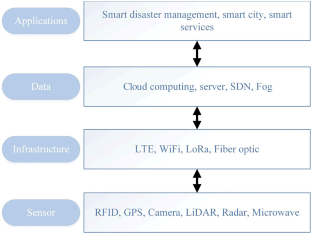
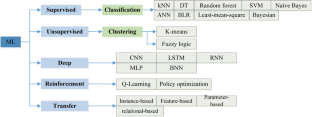
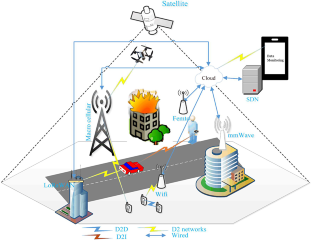
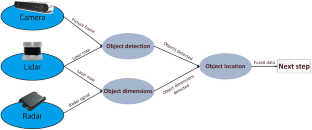
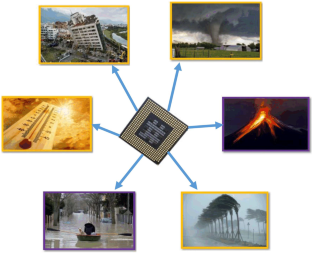
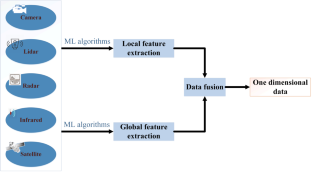
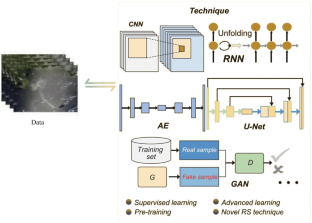
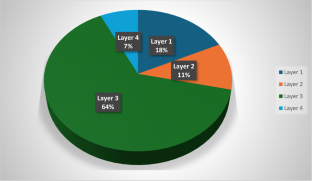
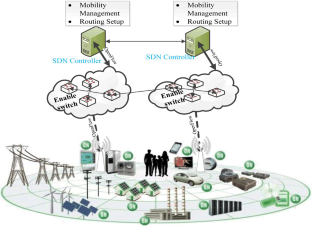
Similar content being viewed by others

GIS and Geospatial Studies in Disaster Management
Chapter © 2023

GIS and Geospatial Studies in Disaster Management
Chapter © 2023

Harnessing Remote Sensing for Civil Engineering: Then, Now, and Tomorrow
Chapter © 2020
Explore related subjects
Data availability
There are no data for this research.
References
- Carminati, M., Sinha, G. R., Mohdiwale, S., & Ullo, S. L. (2021). Miniaturized Pervasive Sensors for Indoor Health Monitoring in Smart cities. Smart Cities, 4(1), 146–155. https://doi.org/10.3390/smartcities4010008. ArticleGoogle Scholar
- Calvanese Strinati, E. (2019). Sep., 6G: The Next Frontier: From Holographic Messaging to Artificial Intelligence Using Subterahertz and Visible Light Communication, IEEE Vehicular Technology Magazine, vol. 14, no. 3, pp. 42–50, https://doi.org/10.1109/MVT.2019.2921162.
- Dennis, L. A., & Fisher, M. (2020). Verifiable Self-Aware Agent-Based Autonomous Systems, Proceedings of the IEEE, vol. 108, no. 7, pp. 1011–1026, Jul. https://doi.org/10.1109/JPROC.2020.2991262.
- Lema, M. A., et al. (2017). 5G case study of internet of skills: Slicing the human senses. EuCNC 2017 - European Conference on Networks and Communications, 1–6. https://doi.org/10.1109/EuCNC.2017.7980762.
- Haxhibeqiri, J., De Poorter, E., Moerman, I., & Hoebeke, J. (2018). A survey of LoRaWAN for IoT: From technology to application. Sensors (Switzerland), 18(11). https://doi.org/10.3390/s18113995.
- Zhang, H., Liu, J., & Kato, N. (2018). Threshold tuning-based Wearable Sensor Fault detection for Reliable Medical Monitoring using bayesian Network Model. Ieee Systems Journal, 12(2), 1886–1896. https://doi.org/10.1109/JSYST.2016.2600582. ArticleGoogle Scholar
- Praveen Kumar, D., Amgoth, T., & Annavarapu, C. S. R. (2019). Machine learning algorithms for wireless sensor networks: A survey. Information Fusion, 49, 1–25. https://doi.org/10.1016/j.inffus.2018.09.013. ArticleGoogle Scholar
- Huynh, T., & Haick, H. (Dec. 2018). Autonomous Flexible Sensors for Health Monitoring. Advanced Materials, 30, 1802337. https://doi.org/10.1002/adma.201802337.
- Sah, D. K., & Amgoth, T. (2018). Parametric survey on cross-layer designs for wireless sensor networks. Comput Sci Rev, 27, 112–134. https://doi.org/10.1016/j.cosrev.2017.12.002. ArticleGoogle Scholar
- Singh, M. K., Amin, S. I., Imam, S. A., Sachan, V. K., & Choudhary, A. (2018). A survey of Wireless Sensor Network and its types. Proceedings - IEEE 2018 International Conference on Advances in Computing Communication Control and Networking ICACCCN 2018, 326–330. https://doi.org/10.1109/ICACCCN.2018.8748710.
- Patel, N. R., & Kumar, S. (2018). Wireless Sensor Networks’ Challenges and Future Prospects, in International Conference on System Modeling & Advancement in Research Trends (SMART), IEEE, Nov. 2018, pp. 60–65. https://doi.org/10.1109/SYSMART.2018.8746937.
- Olsson, J. (2014). 6LoWPAN demystified.
- Moridi, M. A., Kawamura, Y., Sharifzadeh, M., Chanda, E. K., Wagner, M., & Okawa, H. (2017). Performance analysis of ZigBee network topologies for underground space monitoring and communication systems, Tunnelling and Underground Space Technology, vol. 71, no. July pp. 201–209, 2018, https://doi.org/10.1016/j.tust.2017.08.018.
- Ertürk, M. A., Aydın, M. A., Büyükakkaşlar, M. T., & Evirgen, H. (2019). A Survey on LoRaWAN Architecture, Protocol and technologies. Future Internet, 11(10), 216. https://doi.org/10.3390/fi11100216. ArticleGoogle Scholar
- Sinha, R. S., Wei, Y., & Hwang, S. H. (2017). A survey on LPWA technology: LoRa and NB-IoT. ICT Express, 3(1), 14–21. https://doi.org/10.1016/j.icte.2017.03.004. ArticleGoogle Scholar
- Khashan, O. A., Ahmad, R., & Khafajah, N. M. (Apr. 2021). An automated lightweight encryption scheme for secure and energy-efficient communication in wireless sensor networks. Ad Hoc Networks, 115, 102448. https://doi.org/10.1016/j.adhoc.2021.102448.
- Torres, P., Rodes-blanco, M., Viana‐soto, A., Nieto, H., & García, M. (2021). The role of remote sensing for the assessment and monitoring of forest health: A systematic evidence synthesis. Forests, 12(8), 1–35. https://doi.org/10.3390/f12081134. ArticleGoogle Scholar
- Salcedo-Sanz, S. (2020). November., Machine learning information fusion in Earth observation: A comprehensive review of methods, applications and data sources, Information Fusion, vol. 63, no. pp. 256–272, 2020, https://doi.org/10.1016/j.inffus.2020.07.004.
- Kaku, K. (2018). Satellite remote sensing for disaster management support: A holistic and staged approach based on case studies in Sentinel Asia, International Journal of Disaster Risk Reduction, vol. 33, no. October pp. 417–432, 2019, https://doi.org/10.1016/j.ijdrr.2018.09.015.
- Antoine, R., et al. (2020). Geoscientists in the Sky: Unmanned Aerial vehicles responding to Geohazards. No 6 Springer Netherlands, 41. https://doi.org/10.1007/s10712-020-09611-7.
- Duvvuri, S. (2019). GIS based management system for flood forecast applications. Springer International Publishing. https://doi.org/10.1007/978-3-319-77276-9_1. ArticleGoogle Scholar
- Anthopoulos, L., Janssen, M., & Weerakkody, V. (2016). A Unified Smart City Model (USCM) for smart city conceptualization and benchmarking. International Journal of Electronic Government Research, 12(2), 77–93. https://doi.org/10.4018/IJEGR.2016040105. ArticleGoogle Scholar
- Rezaei, R., & Ghaffarian, S. (2021). Monitoring forest Resilience dynamics from very high-Resolution Satellite images in case of Multi-hazard Disaster. Remote Sens (Basel), 13(20), 4176. https://doi.org/10.3390/rs13204176. ArticleGoogle Scholar
- Amit, S. N. K. B., Shiraishi, S., Inoshita, T., & Aoki, Y. (2016). Analysis of satellite images for disaster detection, International Geoscience and Remote Sensing Symposium (IGARSS), vol. 2016-Novem, no. July, pp. 5189–5192, https://doi.org/10.1109/IGARSS.2016.7730352.
- Oktari, R. S., Munadi, K., Idroes, R., Sofyan, H., & August (2020). 101881, doi: https://doi.org/10.1016/j.ijdrr.2020.101881.
- Erdelj, M., Natalizio, E., Chowdhury, K. R., & Akyildiz, I. F. (2017). Help from the Sky: Leveraging UAVs for Disaster Management. Ieee Pervasive Computing, 16(1), 24–32. https://doi.org/10.1109/MPRV.2017.11. ArticleGoogle Scholar
- Li, Y., & Ibanez-Guzman, J. (2020). Lidar for Autonomous Driving: The principles, challenges, and trends for Automotive Lidar and Perception systems. Ieee Signal Processing Magazine, 37(4), 50–61. https://doi.org/10.1109/MSP.2020.2973615. ArticleGoogle Scholar
- Reddy Cenkeramaddi, L., Bhatia, J., Jha, A., Kumar Vishkarma, S., & Jee, S. (2020). A Survey on Sensors for Autonomous Systems, Proceedings of the 15th IEEE Conference on Industrial Electronics and Applications, ICIEA 2020, pp. 1182–1187, https://doi.org/10.1109/ICIEA48937.2020.9248282.
- Darabkh, K. A., Al-Maaitah, N. J., Jafar, I. F., & Khalifeh, A. F. (2018). A Novel Energy-aware clustering and routing protocol in Wireless Sensor Networks. Computers and Electrical Engineering, 72, 702–718. https://doi.org/10.1016/j.compeleceng.2017.11.017. ArticleGoogle Scholar
- Chi, M., Plaza, A., Benediktsson, J. A., Sun, Z., Shen, J., & Zhu, Y. (2016). Big Data for Remote Sensing: Challenges and Opportunities, Proceedings of the IEEE, vol. 104, no. 11, pp. 2207–2219, https://doi.org/10.1109/JPROC.2016.2598228.
- Chen, G., Wang, A., Zhao, S., Liu, L., & Chang, C. Y. (2018). Latent feature learning for activity recognition using simple sensors in smart homes. Multimed Tools Appl, 77(12), 15201–15219. https://doi.org/10.1007/s11042-017-5100-4. ArticleGoogle Scholar
- Arridha, R., Sukaridhoto, S., Pramadihanto, D., & Funabiki, N. (2017). Classification extension based on IoT-big data analytic for smart environment monitoring and analytic in real-time system. International Journal of Space-Based and Situated Computing, 7(2), 82. https://doi.org/10.1504/ijssc.2017.086821. ArticleGoogle Scholar
- Ji, C., Lu, H., Ji, C., & Yan, J. (2015). An IoT and Mobile Cloud based Architecture for Smart Planting, Proceedings of the 3rd International Conference on Machinery, Materials and Information Technology Applications, vol. 35, no. Icmmita, pp. 1001–1005, 2015, https://doi.org/10.2991/icmmita-15.2015.184.
- An, B. W., et al. (2017). Smart sensor systems for wearable electronic devices. Polymers (Basel), 9(8). https://doi.org/10.3390/polym9080303.
- Wazirali, R., Ahmad, R., & Alhiyari, S. (Jul. 2021). SDN-OpenFlow Topology Discovery: An overview of performance issues. Applied Sciences, 11, 6999. https://doi.org/10.3390/app11156999.
- Alencar, B. M., Rios, R. A., Santana, C., & Prazeres, C. (2020). FoT-Stream: A Fog platform for data stream analytics in IoT, Comput Commun, vol. 164, no. April, pp. 77–87, https://doi.org/10.1016/j.comcom.2020.10.001.
- Wazirali, R., Ahmad, R., & Abu-Ein, A. A. K. (Dec. 2021). Sustaining accurate detection of phishing URLs using SDN and feature selection approaches. Computer Networks, 201, 108591. https://doi.org/10.1016/j.comnet.2021.108591.
- Junqueira, A. M., Mao, F., Mendes, T. S. G., Simões, S. J. C., Balestieri, J. A. P., & Hannah, D. M. (2021). Estimation of river flow using CubeSats remote sensing. Science of the Total Environment, 788, 147762. https://doi.org/10.1016/j.scitotenv.2021.147762. ArticleGoogle Scholar
- Vashisht, G. (2022). ML Algorithms for Smart Sensor Networks, in Smart Sensor Networks, pp. 73–103. https://doi.org/10.1007/978-3-030-77214-7_4.
- Meng, T., Jing, X., Yan, Z., & Pedrycz, W. (May 2020). A survey on machine learning for data fusion. Information Fusion, 57, 115–129. https://doi.org/10.1016/j.inffus.2019.12.001.
- Ma, Z., Mei, G., & Piccialli, F. (2021). Machine learning for landslides prevention: A survey. Neural Computing and Applications, 33, 10881–10907. https://doi.org/10.1007/s00521-020-05529-8. ArticleGoogle Scholar
- Rui, X., Cao, Y., Yuan, X., Kang, Y., & Song, W. (Oct. 2021). DisasterGAN: Generative adversarial networks for remote sensing disaster image generation. Remote Sens (Basel), 13(21), 4284. https://doi.org/10.3390/rs13214284.
- Al Qundus, J., Dabbour, K., Gupta, S., Meissonier, R., & Paschke, A. (2020). Wireless sensor network for AI-based flood disaster detection. Ann Oper Res no, (0123456789). https://doi.org/10.1007/s10479-020-03754-x.
- Yang, L., & Cervone, G. (2019). Analysis of remote sensing imagery for disaster assessment using deep learning: a case study of flooding event, Soft comput, vol. 23, no. 24, pp. 13393–13408, Dec. https://doi.org/10.1007/s00500-019-03878-8.
- Jiao, W., Wang, L., & McCabe, M. F. (2021). Multi-sensor remote sensing for drought characterization: Current status, opportunities and a roadmap for the future. Remote Sensing of Environment, 256, 112313. https://doi.org/10.1016/j.rse.2021.112313. ArticleGoogle Scholar
- Kim, M., Park, M. S., Im, J., Park, S., & Lee, M. I. (May 2019). Machine learning approaches for detecting Tropical Cyclone formation using Satellite Data. Remote Sens (Basel), 11(10), 1195. https://doi.org/10.3390/rs11101195.
- Ismail, A., Bagula, B. A., & Tuyishimire, E. (2018). Internet-of-things in motion: A UAV coalition model for remote sensing in smart cities. Sensors (Switzerland), 18(7). https://doi.org/10.3390/s18072184.
- Kato, A., Wakabayashi, H., Hayakawa, Y., Bradford, M., Watanabe, M., & Yamaguchi, Y. (2017). Tropical forest disaster monitoring with multi-scale sensors from terrestrial laser, UAV, to satellite radar, in 2017 IEEE International Geoscience and Remote Sensing Symposium (IGARSS), IEEE, Jul. pp. 2883–2886. https://doi.org/10.1109/IGARSS.2017.8127600.
- Kocic, J., Jovicic, N., & Drndarevic, V. (2018). Sensors and Sensor Fusion in Autonomous vehicles. 2018 26th Telecommunications Forum TELFOR 2018 - Proceedings, no. November 2018. https://doi.org/10.1109/TELFOR.2018.8612054.
- Lohar, S., Zhu, L., Young, S., Graf, P., & Blanton, M. (2021). Sensing Technology Survey for obstacle detection in Vegetation, pp. 672–685.
- Sharma, K., Anand, D., Sabharwal, M., Tiwari, P. K., Cheikhrouhou, O., & Frikha, T. (2021). A Disaster Management Framework using internet of things-based interconnected devices. Math Probl Eng, 2021. https://doi.org/10.1155/2021/9916440.
- Neelam, S., Sood, S. K., & A Scientometric Review of Global Research on Smart Disaster Management. (2021)., IEEE Transactions on Engineering Management, vol. 68, no. 1. Institute of Electrical and Electronics Engineers Inc., pp. 317–329, Feb. 01, https://doi.org/10.1109/TEM.2020.2972288.
- Abid, S. K., et al. (2021). Toward an integrated disaster management approach: How artificial intelligence can boost disaster management. Sustainability (Switzerland), 13,. https://doi.org/10.3390/su13221256022. MDPI, Nov. 01.
- Cicek, D., & Kantarci, B. (2023). Use of Mobile Crowdsensing in Disaster Management: A Systematic Review, Challenges, and Open Issues, Sensors, vol. 23, no. 3. MDPI, Feb. 01, https://doi.org/10.3390/s23031699.
- Damaševičius, R., Bacanin, N., & Misra, S. (2023). From Sensors to Safety: Internet of Emergency Services (IoES) for Emergency Response and Disaster Management, Journal of Sensor and Actuator Networks, vol. 12, no. 3. MDPI, Jun. 01, https://doi.org/10.3390/jsan12030041.
- UNISR (2017). Economic losses, poverty & disasters 1998–2017.
- Sakurai, M., & Thapa, D. (Jan. 2017). Building Resilience through Effective Disaster Management. International Journal of Information Systems for Crisis Response and Management, 9(1), 11–26. https://doi.org/10.4018/IJISCRAM.2017010102.
- Sakurai, M., & Murayama, Y. (2019). Information technologies and disaster management – benefits and issues -. Progress in Disaster Science, 2, 100012. https://doi.org/10.1016/j.pdisas.2019.100012.
- Sukmaningsih, D. W., Suparta, W., Trisetyarso, A., Abbas, B. S., & Kang, C. H. (2020). Proposing smart disaster management in urban area (Vol. 830). Springer International Publishing. https://doi.org/10.1007/978-3-030-14132-5_1.
- Sakurai, M., & Kokuryo, J. (2012). Preparing for creative responses to ‘beyond assumed level’ disasters: Lessons from the ict management in the 2011 great East Japan Earthquake crisis. Risk Governance and Control: Financial Markets and Institutions, 2(4), 17–24. https://doi.org/10.22495/rgcv2i4art2. ArticleGoogle Scholar
- Masroor, R., Naeem, M., & Ejaz, W. (2021). Efficient deployment of UAVs for disaster management: A multi-criterion optimization approach, Comput Commun, vol. 177, no. January, pp. 185–194, https://doi.org/10.1016/j.comcom.2021.07.006.
- Gupta, A. T., & Approach, A. I. (2018). Open Water Journal, 5, 2, 2. Google Scholar
- Munawar, H. S., Hammad, A. W. A., & Waller, S. T. (2022). Remote Sensing Methods for Flood Prediction: A Review, Sensors, vol. 22, no. 3. MDPI, Feb. 01, https://doi.org/10.3390/s22030960.
- Van de Bartel, T., & He (2012). D esign of the. Journal of Information Technology Theory and Application, 1(1), 253–292. Google Scholar
- McGrath, J. L., et al. (2018). Using virtual reality Simulation environments to assess competence for Emergency Medicine Learners. Academic Emergency Medicine, 25(2), 186–195. https://doi.org/10.1111/acem.13308. ArticleGoogle Scholar
- Sakaki, T., Okazaki, M., & Matsuo, Y. (2013). Tweet analysis for real-time event detection and earthquake reporting system development. Ieee Transactions on Knowledge and Data Engineering, 25(4), 919–931. https://doi.org/10.1109/TKDE.2012.29. ArticleGoogle Scholar
- Song, T., Cai, J., Chahine, T., & Li, L. (2021). Towards Smart cities by Internet of things (IoT)—a Silent Revolution in China. Journal of the Knowledge Economy, 12(2). https://doi.org/10.1007/s13132-017-0493-x.
- Huijsing, J. H. (2007). Smart Sensor systems: Why? Where? How? in Smart Sensor systems (pp. 1–21). John Wiley & Sons, Ltd. https://doi.org/10.1002/9780470866931.ch1.
- Javaid, N. (2022). Integration of context awareness in internet of Agricultural things. ICT Express no xxxx. https://doi.org/10.1016/j.icte.2021.09.004. ArticleGoogle Scholar
- Ahmad, R., Sundararajan, E. A., & Khalifeh, A. (2020). A survey on femtocell handover management in dense heterogeneous 5G networks, Telecommun Syst, vol. 75, no. 4, pp. 481–507, Dec. https://doi.org/10.1007/s11235-020-00718-1.
- Fitzek, F. H. P., Seeling, P., Höschele, T., & Jacobfeuerborn, B. (2020). On the need of computing in future communication networks. https://doi.org/10.1016/b978-0-12-820488-7.00011-6.
- Basloom, S., Akkari, N., & Aldabbagh, G. (2018). Mobility Management in SDN and NFV-based Next-Generation Wireless Networks: An Overview and Qualitative Evaluation, 1st International Conference on Advanced Research in Engineering Sciences, ARES pp. 1–8, 2018, https://doi.org/10.1109/ARESX.2018.8723275.
- Tahir, A., et al. (2020). A systematic review on cloud storage mechanisms concerning e-healthcare systems. Sensors (Switzerland), 20, 1–32. https://doi.org/10.3390/s20185392. ArticleGoogle Scholar
- Siriwardhana, Y., Gür, G., Ylianttila, M., & Liyanage, M. (2021). The role of 5G for digital healthcare against COVID-19 pandemic: Opportunities and challenges. ICT Express, 7(2), 244–252. https://doi.org/10.1016/j.icte.2020.10.002. ArticleGoogle Scholar
- Dutt, N., Regazzoni, C. S., Rinner, B., & Yao, X. (2020). Self-Awareness for Autonomous Systems, Proceedings of the IEEE, vol. 108, no. 7, pp. 971–975, https://doi.org/10.1109/jproc.2020.2990784.
- Gürgen, L., & Honiden, S. (2009). Management of networked sensing devices, Proceedings - IEEE International Conference on Mobile Data Management, pp. 502–507, https://doi.org/10.1109/MDM.2009.88.
- Ahmad, R. H., & Pathan, A. S. K. (2016). A Study on M2M (Machine to Machine) System and Communication, in Security Solutions and Applied Cryptography in Smart Grid Communications, pp. 179–214. https://doi.org/10.4018/978-1-5225-1829-7.ch010.
- Wazirali, R., & Ahmad, R. (2022). Machine learning approaches to Detect DoS and their effect on WSNs lifetime. Computers Materials & Continua, 70(3), 4922–4946. https://doi.org/10.32604/cmc.2022.020044. ArticleGoogle Scholar
- Dong, J., Zhuang, D., Huang, Y., & Fu, J. (2009). Advances in multi-sensor data fusion: Algorithms and applications. Sensors (Basel, Switzerland), 9(10), 7771–7784. https://doi.org/10.3390/s91007771. ArticleGoogle Scholar
- Liu, H., & Lang, B. (2019). Machine learning and deep learning methods for intrusion detection systems: A survey. Applied Sciences (Switzerland), 9(20). https://doi.org/10.3390/app9204396.
- Cui, L., Yang, S., Chen, F., Ming, Z., Lu, N., & Qin, J. (2018). A survey on application of machine learning for internet of things. International Journal of Machine Learning and Cybernetics, 9(8), 1399–1417. https://doi.org/10.1007/s13042-018-0834-5. ArticleGoogle Scholar
- Abuhamad, M., Abuhmed, T., Mohaisen, D., & Nyang, D. (2020). AUToSen: Deep-learning-based implicit continuous authentication using smartphone sensors. IEEE Internet Things J, 7(6), 5008–5020. https://doi.org/10.1109/JIOT.2020.2975779. ArticleGoogle Scholar
- Messaoud, S., Bradai, A., Bukhari, S. H. R., Quang, P. T. A., Ben Ahmed, O., & Atri, M. (2020). A survey on machine learning in internet of things: Algorithms, strategies, and applications. Internet of Things, 12, 100314. https://doi.org/10.1016/j.iot.2020.100314. ArticleGoogle Scholar
- Modak, S., Sehgal, D., & Valadi, J. (2019). Applications of artificial intelligence and machine learning in viral biology, Global Virology III: Virology in the 21st Century, vol. 154, no. February, pp. 1–39, https://doi.org/10.1007/978-3-030-29022-1_1.
- Sharma, H., Haque, A., & Blaabjerg, F. (2021). Machine learning in wireless sensor networks for smart cities: A survey. Electronics (Switzerland), 10(9), 1–22. https://doi.org/10.3390/electronics10091012. ArticleGoogle Scholar
- Abujayyab, S. K. M., et al. (Dec. 2023). Integrating object-based and pixel-based segmentation for building footprint extraction from satellite images. Journal of King Saud University - Computer and Information Sciences, 35(10), 101802. https://doi.org/10.1016/j.jksuci.2023.101802.
- Alahmad, T., Neményi, M., & Nyéki, A. (2023). Applying IoT Sensors and Big Data to Improve Precision Crop Production: A Review, Agronomy, vol. 13, no. 10. Multidisciplinary Digital Publishing Institute (MDPI), Oct. 01, https://doi.org/10.3390/agronomy13102603.
- Allioui, H., & Mourdi, Y. Exploring the Full Potentials of IoT for Better Financial Growth and Stability: A Comprehensive Survey, Sensors, vol. 23, no. 19. Multidisciplinary Digital Publishing Institute (MDPI), Oct. 01, 2023. https://doi.org/10.3390/s23198015.
- Wang, M., Xu, C., Lin, Y., Lu, Z., Sun, J., & Gui, G. (May 2023). A distributed Sensor System based on Cloud-Edge-End Network for Industrial Internet of things †. Future Internet, 15(5). https://doi.org/10.3390/fi15050171.
- Ahmad, R., Rinner, B., Wazirali, R., Abujayyab, S. K. M., & Almajalid, R. (2023). Two-level Sensor Self-Calibration based on interpolation and autoregression for low-cost Wireless Sensor Networks. Ieee Sensors Journal, 1–1. https://doi.org/10.1109/JSEN.2023.3309759.
- Alhasan, W., Ahmad, R., Wazirali, R., Aleisa, N., & Abo Shdeed, W. (Oct. 2023). Adaptive mean center of mass particle swarm optimizer for auto-localization in 3D wireless sensor networks. Journal of King Saud University , 35(9), 101782. https://doi.org/10.1016/j.jksuci.2023.101782. Computer and Information Sciences.
- Ashrif, F. F., Sundararajan, E. A., Ahmad, R., Hasan, M. K., & Yadegaridehkordi, E. (2024). Survey on the authentication and key agreement of 6LoWPAN: Open issues and future direction, Journal of Network and Computer Applications, vol. 221. Academic Press, Jan. 01, https://doi.org/10.1016/j.jnca.2023.103759.
- Bernardini, G., Santarelli, S., Quagliarini, E., & D’Orazio, M. (Sep. 2017). Dynamic guidance tool for a safer earthquake pedestrian evacuation in urban systems. Computers, Environment and Urban Systems, 65, 150–161. https://doi.org/10.1016/j.compenvurbsys.2017.07.001.
- Alonso, L., Milanés, V., Torre-Ferrero, C., Godoy, J., Oria, J. P., & de Pedro, T. (2011). Ultrasonic sensors in urban traffic driving-aid systems. Sensors (Basel, Switzerland), 11(1), 661–673. https://doi.org/10.3390/s110100661. ArticleGoogle Scholar
- Park, W. J., Kim, B. S., Seo, D. E., Kim, D. S., & Lee, K. H. (2008). Parking space detection using ultrasonic sensor in parking assistance system, IEEE Intelligent Vehicles Symposium, Proceedings, pp. 1039–1044, https://doi.org/10.1109/IVS.2008.4621296.
- Yun, J., & Song, M. H. (2014). Detecting direction of movement using pyroelectric infrared sensors. Ieee Sensors Journal, 14(5), 1482–1489. https://doi.org/10.1109/JSEN.2013.2296601. ArticleGoogle Scholar
- Yun, J., & Lee, S. S. (2014). Human movement detection and identification using pyroelectric infrared sensors. Sensors (Switzerland), 14(5), 8057–8081. https://doi.org/10.3390/s140508057. ArticleGoogle Scholar
- Krys, D., & Najjaran, H. (2007). Development of visual simultaneous localization and mapping (VSLAM) for a pipe inspection robot, Proceedings of the IEEE International Symposium on Computational Intelligence in Robotics and Automation, CIRA 2007, pp. 344–349, 2007, https://doi.org/10.1109/CIRA.2007.382850.
- Tanaka, M. (2007). An industrial and applied review of new MEMS devices features. Microelectron Eng, 84, 5–8. https://doi.org/10.1016/j.mee.2007.01.232. ArticleGoogle Scholar
- Han, J., Kim, D., Lee, M., & Sunwoo, M. (2012). Enhanced road boundary and obstacle detection using a downward-looking LIDAR sensor. Ieee Transactions on Vehicular Technology, 61(3), 971–985. https://doi.org/10.1109/TVT.2012.2182785. ArticleGoogle Scholar
- Pauli, M., et al. (2017). Miniaturized millimeter-Wave Radar Sensor for high-accuracy applications. IEEE Trans Microw Theory Tech, 65(5), 1707–1715. https://doi.org/10.1109/TMTT.2017.2677910. ArticleGoogle Scholar
- Zhang, Z., Tian, Z., & Zhou, M. (2018). Latern: Dynamic Continuous Hand Gesture Recognition Using FMCW Radar Sensor, IEEE Sens J, vol. 18, no. 8, pp. 3278–3289, https://doi.org/10.1109/JSEN.2018.2808688.
- Patole, S. M., Torlak, M., Wang, D., & Ali, M. (2017). Automotive radars: A review of signal processing techniques. Ieee Signal Processing Magazine, 34(2), 22–35. https://doi.org/10.1109/MSP.2016.2628914. ArticleGoogle Scholar
- Yeole, A., Kalbande, D. R., & Sharma, A. (2019). Security of 6LoWPAN IoT networks in hospitals for Medical Data Exchange. Procedia Comput Sci, 152, 212–221. https://doi.org/10.1016/j.procs.2019.05.045. ArticleGoogle Scholar
- Ahmad, R., Hämäläinen, M., Wazirali, R., & Abu-Ain, T. (2023). Digital-care in next generation networks: Requirements and future directions, Computer Networks, vol. 224. Elsevier B.V., Apr. 01, https://doi.org/10.1016/j.comnet.2023.109599.
- Jahromi, B. S., Tulabandhula, T., & Cetin, S. (2019). Real-time hybrid multi-sensor fusion framework for perception in autonomous vehicles. Sensors (Switzerland), 19(20), 1–23. https://doi.org/10.3390/s19204357. ArticleGoogle Scholar
- Liu, F., Yu, Q., Chen, L., Jeon, G., Albertini, M. K., & Yang, X. (2021). Aerial image super-resolution based on deep recursive dense network for disaster area surveillance. Pers Ubiquitous Comput no Dl. https://doi.org/10.1007/s00779-020-01516-x. ArticleGoogle Scholar
- Liu, B. F., et al. (2017). Is a picture worth a thousand words? The effects of maps and warning messages on how publics respond to disaster information. Public Relat Rev, 43(3), 493–506. https://doi.org/10.1016/j.pubrev.2017.04.004. ArticleGoogle Scholar
- Ma, Y., Guga, S., Xu, J., Zhang, J., Tong, Z., & Liu, X. (2021). Comprehensive risk assessment of high temperature disaster to kiwifruit in Shaanxi province, China. International Journal of Environmental Research and Public Health, 18(19). https://doi.org/10.3390/ijerph181910437.
- Kumar, N., Agrawal, A., & Khan, R. A. (2018). Smartphone with solar charging mechanism to issue alert during rainfall disaster, Communications in Computer and Information Science, vol. 799, no. March, pp. 442–449, https://doi.org/10.1007/978-981-10-8527-7_37.
- Shankar, K. (2008). Wind, water, and Wi-Fi: New trends in community informatics and disaster management. Information Society, 24(2), 116–120. https://doi.org/10.1080/01972240701883963. ArticleGoogle Scholar
- Ullo, S. L., & Sinha, G. R. (2021). Advances in iot and smart sensors for remote sensing and agriculture applications. Remote Sens (Basel), 13(13). https://doi.org/10.3390/rs13132585.
- Mostapha Mohammad, F. D., & Harb (2017). Remote sensing in Multirisk Assessment. IEEE Geosci Remote Sens Mag, 5(1), 53–65. ArticleGoogle Scholar
- Meenakshi, Y., & Bhavani Kumar, Y. (2019). Multi-angle LIDAR for remote sensing smoke emissions from wildfires. Springer International Publishing. https://doi.org/10.1007/978-3-319-77276-9_9. ArticleGoogle Scholar
- Shaik, I., Kameswara Rao, S. V. C., & Penta, B. (2019). Detection of landslide using high resolution satellite data and analysis using entropy. Springer International Publishing. https://doi.org/10.1007/978-3-319-77276-9_22.
- Zhang, J., Zhang, Q., Bao, A., & Wang, Y. (2019). A new remote sensing dryness index based on the near-infrared and red spectral space. Remote Sens (Basel), 11(4). https://doi.org/10.3390/rs11040456.
- Mooney, J. G., & Johnson, E. N. (2014). A comparison of Automatic Nap-of-the-earth Guidance Strategies for helicopters. Journal of Field Robotics, 33(1), 1–17. https://doi.org/10.1002/rob. ArticleGoogle Scholar
- Liu, Q., Ruan, C., Zhong, S., Li, J., Yin, Z., & Lian, X. (2018). Risk assessment of storm surge disaster based on numerical models and remote sensing, International Journal of Applied Earth Observation and Geoinformation, vol. 68, no. January, pp. 20–30, https://doi.org/10.1016/j.jag.2018.01.016.
- Liu, H., Zhou, Q., Li, Q., Hu, S., Shi, T., & Wu, G. (2019). Determining switching threshold for NIR-SWIR combined atmospheric correction algorithm of ocean color remote sensing, ISPRS Journal of Photogrammetry and Remote Sensing, vol. 153, no. April, pp. 59–73, https://doi.org/10.1016/j.isprsjprs.2019.04.013.
- Saito, H., Honda, H., & Kawahara, R. (2017). Disaster avoidance control against heavy rainfall, Proceedings - IEEE INFOCOM, pp. 1–9, https://doi.org/10.1109/INFOCOM.2017.8057154.
- Bhangale, U. M., Kurte, K. R., Durbha, S. S., King, R. L., & Younan, N. H., Big data processing using hpc for remote sensing disaster data, in (2016). IEEE International Geoscience and Remote Sensing Symposium (IGARSS), IEEE, Jul. 2016, pp. 5894–5897. https://doi.org/10.1109/IGARSS.2016.7730540.
- Rahman, M. S., Di, L., Yu, E., Lin, L., & Yu, Z. (2021). Remote sensing based Rapid Assessment of Flood crop damage using Novel disaster vegetation damage index (DVDI). International Journal of Disaster Risk Science, 12(1), 90–110. https://doi.org/10.1007/s13753-020-00305-7. ArticleGoogle Scholar
- Zou, Q., Research on cloud computing for disaster monitoring using massive remote sensing data, in (2017). IEEE 2nd International Conference on Cloud Computing and Big Data Analysis (ICCCBDA), IEEE, Apr. 2017, pp. 29–33. https://doi.org/10.1109/ICCCBDA.2017.7951879.
- Santilli, G., Vendittozzi, C., Cappelletti, C., Battistini, S., & Gessini, P. (2018). CubeSat constellations for disaster management in remote areas, Acta Astronaut, vol. 145, no. January, pp. 11–17, https://doi.org/10.1016/j.actaastro.2017.12.050.
- Xu, A., Anguelov, D., & Jain, D. (2018). PointFusion: Deep Sensor Fusion for 3D Bounding Box Estimation. (arXiv:1711.10871v2 [cs.CV] UPDATED), The IEEE Conference on Computer Vision and Pattern Recognition, pp. 244–253.
- Li, J., Huang, X., & Gong, J. (2019). Deep neural network for remote-sensing image interpretation: Status and perspectives. Natl Sci Rev, 6(6), 1082–1086. https://doi.org/10.1093/nsr/nwz058. ArticleGoogle Scholar
- Gong, Z., Zhong, P., Yu, Y., & Hu, W. (2018). Diversity-promoting deep structural metric learning for remote sensing scene classification. IEEE Transactions on Geoscience and Remote Sensing, 56(1), 371–390. https://doi.org/10.1109/TGRS.2017.2748120. ArticleGoogle Scholar
- He, N., Member, S., Fang, L., Member, S., & Li, S. (2020). Skip-connected Covariance Network for. IEEE Trans Neural Netw Learn Syst, 31(5), 1461–1474. ArticleGoogle Scholar
- Shi, C., Wang, T., & Wang, L. (2020). Branch Feature Fusion Convolution Network for Remote sensing scene classification. IEEE J Sel Top Appl Earth Obs Remote Sens, 13, 5194–5210. https://doi.org/10.1109/JSTARS.2020.3018307. ArticleGoogle Scholar
- Barmpoutis, P., & Stathaki, T. (2020). A Novel Framework for Early Fire Detection Using Terrestrial and Aerial 360-Degree Images, Lecture Notes in Computer Science (including subseries Lecture Notes in Artificial Intelligence and Lecture Notes in Bioinformatics), vol. 12002 LNCS, pp. 63–74, https://doi.org/10.1007/978-3-030-40605-9_6.
- Sameen, M. I., & Pradhan, B. (2019). Landslide detection using residual networks and the Fusion of Spectral and Topographic Information. Ieee Access : Practical Innovations, Open Solutions, 7, 114363–114373. https://doi.org/10.1109/ACCESS.2019.2935761. ArticleGoogle Scholar
- Cui, F. (2020). Deployment and integration of smart sensors with IoT devices detecting fire disasters in huge forest environment. Computer Communications, 150, 818–827. https://doi.org/10.1016/j.comcom.2019.11.051. ArticleGoogle Scholar
- Ateeq, Z., & Momani, M. (2020). Wireless sensor networks using image processing for fire detection, CITISIA 2020 - IEEE Conference on Innovative Technologies in Intelligent Systems and Industrial Applications, Proceedings, https://doi.org/10.1109/CITISIA50690.2020.9371798.
- Kumar, S., & Setty, S. L. N. (2021). UFS-LSTM: Unsupervised feature selection with long short-term memory network for remote sensing scene classification. Evol Intell no, (0123456789). https://doi.org/10.1007/s12065-021-00660-4.
- Cervone, G., Sava, E., Huang, Q., Schnebele, E., Harrison, J., & Waters, N. (2016). Using Twitter for tasking remote-sensing data collection and damage assessment: 2013 Boulder flood case study. International Journal of Remote Sensing, 37(1), 100–124. https://doi.org/10.1080/01431161.2015.1117684.
- Ai, B. (2020). Convolutional neural network to retrieve water depth in marine shallow water area from remote sensing images, IEEE J Sel Top Appl Earth Obs Remote Sens, vol. 13, pp. 2888–2898, https://doi.org/10.1109/JSTARS.2020.2993731.
- Strak, M., et al. (2012). Respiratory health effects of airborne particulate matter: The role of particle size, composition, and oxidative potential-the RAPTES project. Environmental Health Perspectives, 120(8), 1183–1189. https://doi.org/10.1289/ehp.1104389. ArticleGoogle Scholar
- Rahimi, A. (2017). Short-term prediction of NO2 and NOx concentrations using multilayer perceptron neural network: A case study of Tabriz, Iran. Ecol Process, 6(1). https://doi.org/10.1186/s13717-016-0069-x.
- Pouteau, R., & Stoll, B. (2012). SVM Selective Fusion (SELF) for multi-source classification of structurally complex tropical rainforest. IEEE J Sel Top Appl Earth Obs Remote Sens, 5(4), 1203–1212. https://doi.org/10.1109/JSTARS.2012.2183857. ArticleGoogle Scholar
- Towfiqul, A. R. M., Islam, et al. (2021). Flood susceptibility modelling using advanced ensemble machine learning models. Geoscience Frontiers, 12(3). https://doi.org/10.1016/j.gsf.2020.09.006.
- Jenifer, A. E., & Natarajan, S. (2021). CocoNet: A hybrid machine learning framework for coconut farm identification and its cyclonic damage assessment on bitemporal SAR images. Journal of Applied Remote Sensing, 15(04), 1–18. https://doi.org/10.1117/1.jrs.15.042408. ArticleGoogle Scholar
- Akbarian, H., Gheibi, M., Hajiaghaei-Keshteli, M., & Rahmani, M. (Jun. 2022). A hybrid novel framework for flood disaster risk control in developing countries based on smart prediction systems and prioritized scenarios. Journal of Environmental Management, 312. https://doi.org/10.1016/j.jenvman.2022.114939.
- Elvas, L. B., Mataloto, B. M., Martins, A. L., & Ferreira, J. C. (2021). Disaster management in smart cities, Smart Cities, vol. 4, no. 2, pp. 819–839, Jun. https://doi.org/10.3390/smartcities4020042.
- Hoque, M. A. A., Phinn, S., & Roelfsema, C. (2017). A systematic review of tropical cyclone disaster management research using remote sensing and spatial analysis. Ocean Coast Manag, 146, 109–120. https://doi.org/10.1016/j.ocecoaman.2017.07.001. ArticleGoogle Scholar
- Sicari, S., Rizzardi, A., Grieco, L. A., & Coen-Porisini, A. (2015). Security, privacy and trust in internet of things: The road ahead. Computer Networks, 76, 146–164. https://doi.org/10.1016/j.comnet.2014.11.008. ArticleGoogle Scholar
- Ahmad, R., Sundararajan, E. A., & Abu-Ain, T., Analysis the Effect of Clustering and Lightweight Encryption Approaches on WSNs Lifetime, in (2021). International Conference on Electrical Engineering and Informatics (ICEEI), Selangor, Malaysia: IEEE, Oct. 2021, pp. 1–6. https://doi.org/10.1109/ICEEI52609.2021.9611120.
- Gui, G., Liu, M., Tang, F., Kato, N., & Adachi, F. (2020). 6G: Opening New Horizons for Integration of Comfort, Security, and intelligence. Ieee Wireless Communications, 27(5), 126–132. https://doi.org/10.1109/MWC.001.1900516. ArticleGoogle Scholar
- Ahmad, R., Wazirali, R., Abu-Ain, T., & Almohamad, T. A. (Aug. 2022). Adaptive Trust-based Framework for securing and reducing cost in low-cost 6LoWPAN Wireless Sensor Networks. Applied Sciences, 12(17), 8605. https://doi.org/10.3390/app12178605.
- Arai, S., Kinoshita, M., & Yamazato, T. (2021). Optical wireless communication: A candidate 6G technology? IEICE Transactions on Fundamentals of Electronics, Communications and Computer Sciences, vol. E104A, no. 1, pp. 227–234, https://doi.org/10.1587/transfun.2020WBI0001.
- Chaudhary, S., & Amphawan, A. (2014). The role and challenges of free-space optical systems. Journal of Optical Communications, 35(4), 327–334. https://doi.org/10.1515/joc-2014-0004. ArticleGoogle Scholar
- Akyildiz, I. F., Ia, & Kak (2019). The internet of space things/cubesats. IEEE Netw, 33(5), 212–218. https://doi.org/10.1109/MNET.2019.1800445. ArticleGoogle Scholar
- Ma, Y., et al. (2015). Remote sensing big data computing: Challenges and opportunities. Future Generation Computer Systems, 51, 47–60. https://doi.org/10.1016/j.future.2014.10.029. ArticleGoogle Scholar
- Torresan, C., Luyssaert, S., Filippa, G., Imangholiloo, M., & Gaulton, R. (2017). Remote Sensing Technologies for Assessing Climate-Smart Criteria in Mountain Forests, in Impact, vol. no. 3, 2022, pp. 399–433. https://doi.org/10.1007/978-3-030-80767-2_11.
- Greenwald, H. S., & Oertel, C. K. (2017). Future Directions in Machine Learning, Front Robot AI, vol. 3, no. January, pp. 1–7, https://doi.org/10.3389/frobt.2016.00079.
- Bacciu, D., Errica, F., Micheli, A., & Podda, M. (2020). A gentle introduction to deep learning for graphs. Neural Networks, 129, 203–221. https://doi.org/10.1016/j.neunet.2020.06.006. ArticleGoogle Scholar
- Yan, X., Ai, T., Yang, M., & Yin, H. (2019). A graph convolutional neural network for classification of building patterns using spatial vector data, ISPRS Journal of Photogrammetry and Remote Sensing, vol. 150, no. February, pp. 259–273, https://doi.org/10.1016/j.isprsjprs.2019.02.010.
- Imoize, A. L., Adedeji, O., Tandiya, N., & Shetty, S. (2021). 6 g enabled smart infrastructure for sustainable society: Opportunities, challenges, and research roadmap. Sensors (Basel, Switzerland), 21(5), 1–57. https://doi.org/10.3390/s21051709. ArticleGoogle Scholar
- Mostafavi, S., Hakami, V., & Sanaei, M. (2021). Quality of service provisioning in network function virtualization: a survey, Computing, vol. 103, no. 5, pp. 917–991, May https://doi.org/10.1007/s00607-021-00925-x.
- Wazirali, R., Ahmad, R., Al-Amayreh, A., Al-Madi, M., & Khalifeh, A. (Jul. 2021). Secure Watermarking schemes and their approaches in the IoT Technology: An overview. Electronics (Basel), 10(14), 1744. https://doi.org/10.3390/electronics10141744.
- Alshrif, F. F., Sundararajan, E. A., Ahmad, R., & Alkhatib, Y., New Framework for Authentication and key Establishment to Secure 6LoWPAN Networks, in (2021). International Conference on Electrical Engineering and Informatics (ICEEI), Selangor, Malaysia: IEEE, Oct. 2021, pp. 1–6. https://doi.org/10.1109/ICEEI52609.2021.9611135.
- Ashrif, F. F., Sundararajana, E. A., Hasan, M. K., Ahmad, R., Hashim, A. H. A., & Abu Talib, A. (2024). Provably secured and lightweight authenticated encryption protocol in machine-to-machine communication in industry 4.0. Comput Commun Mar. https://doi.org/10.1016/j.comcom.2024.02.008. ArticleGoogle Scholar
- Ahmad, R., Wazirali, R., Bsoul, Q., Abu-Ain, T., & Abu-Ain, W. (Jul. 2021). Feature-selection and mutual-clustering approaches to Improve DoS Detection and maintain WSNs’ lifetime. Sensors (Basel, Switzerland), 21(14), 4821. https://doi.org/10.3390/s21144821.
Funding
This research received no external funding.
Author information
Authors and Affiliations
- College of Computer Information Technology, American University in the Emirates, Dubai, 503000, United Arab Emirates Rami Ahmad
- Rami Ahmad
You can also search for this author in PubMed Google Scholar
Contributions
Conceptualization, Rami Ahamd.; investigation, Rami Ahamd.; writing—original draft, Rami Ahamd.; visualization, Rami Ahamd.; supervision, Rami Ahamd.; writing—review and editing, Rami Ahamd. All authors have read and agreed to the published version of the manuscript.
Corresponding author
Ethics declarations
Ethical approval
This research does not contain human or animal studies.
Conflict of interest
The author declares that he has no conflicts of interest with respect to this research.
Informed consent
Informed consent was obtained from all individual participants included in the study.
Competing interests
The authors whose names are listed immediately below certify that they have NO affiliations with or involvement in any organization or entity with any financial interest (such as honoraria; educational grants; participation in speakers’ bureaus; membership, employment, consultancies, stock ownership, or other equity interest; and expert testimony or patent-licensing arrangements), or non-financial interest (such as personal or professional relationships, affiliations, knowledge or beliefs) in the subject matter or materials discussed in this manuscript.Author names: Sincerely yours, Rami Ahmad.
Additional information
Publisher’s Note
Springer Nature remains neutral with regard to jurisdictional claims in published maps and institutional affiliations.
Rights and permissions
Springer Nature or its licensor (e.g. a society or other partner) holds exclusive rights to this article under a publishing agreement with the author(s) or other rightsholder(s); author self-archiving of the accepted manuscript version of this article is solely governed by the terms of such publishing agreement and applicable law.
About this article
Cite this article
Ahmad, R. Smart remote sensing network for disaster management: an overview. Telecommun Syst 87, 213–237 (2024). https://doi.org/10.1007/s11235-024-01148-z
- Accepted : 05 April 2024
- Published : 09 May 2024
- Issue Date : September 2024
- DOI : https://doi.org/10.1007/s11235-024-01148-z
Share this article
Anyone you share the following link with will be able to read this content:
Get shareable link
Sorry, a shareable link is not currently available for this article.
Copy to clipboard
Provided by the Springer Nature SharedIt content-sharing initiative
Keywords
- Next generation network
- Sensors
- Smart sensors
- Sustainability
- Remote sensing
- WSN
- Disaster management












